Abstract
Family physicians were asked about their recent experience with caring for dying patients at home and for their evaluation of a recently established Palliative Care Home Support Team. Ninety-four percent of the respondents had cared for at least one dying patient at home during the previous 2 years. About two thirds felt comfortable, competent, confident, supported, and in control. One quarter felt personally drained by the experience, but almost as many found it personally renewing. Of those who had referred patients to the team, two thirds gave the team high ratings for being supportive, helpful, quick to respond, and effective in communication.
Full text
PDF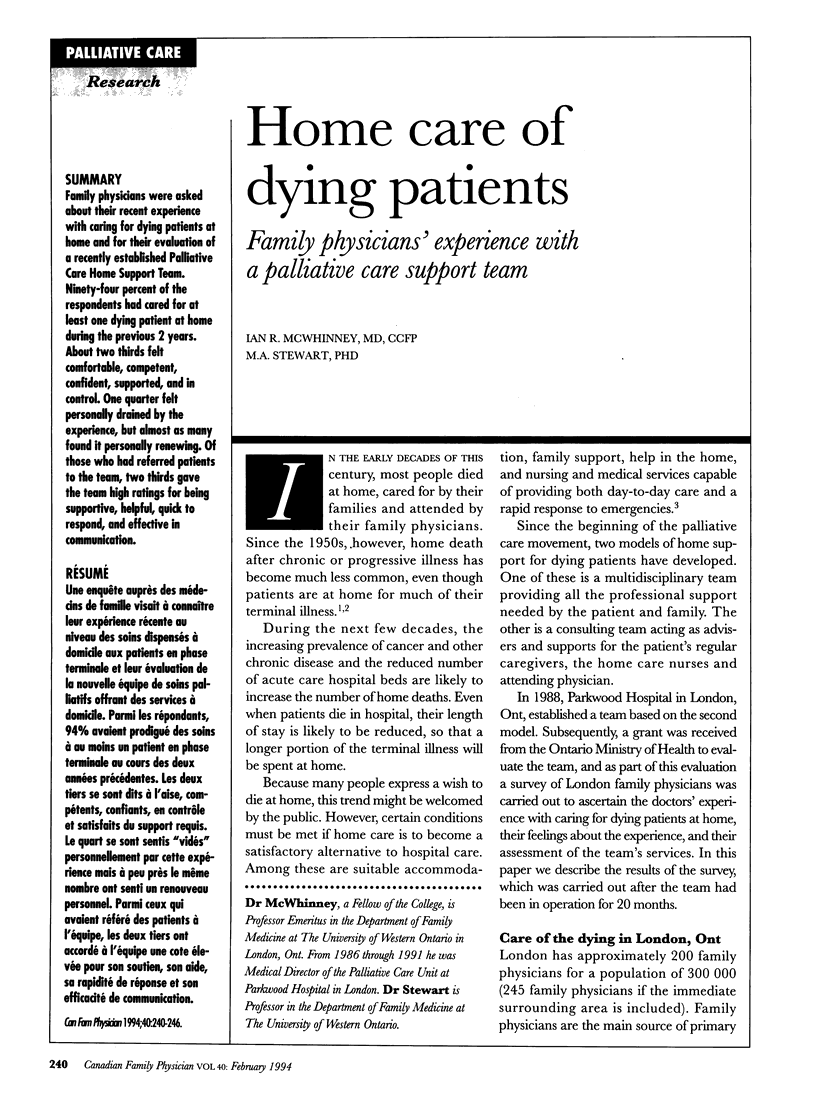
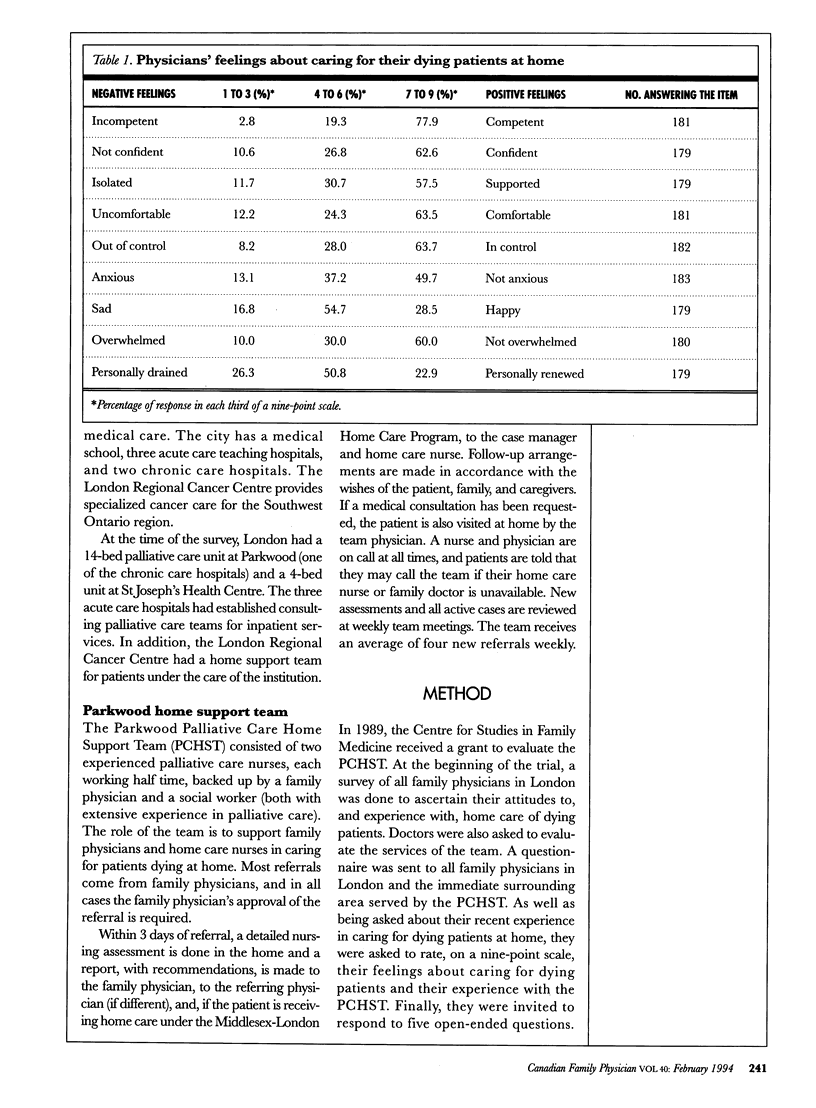
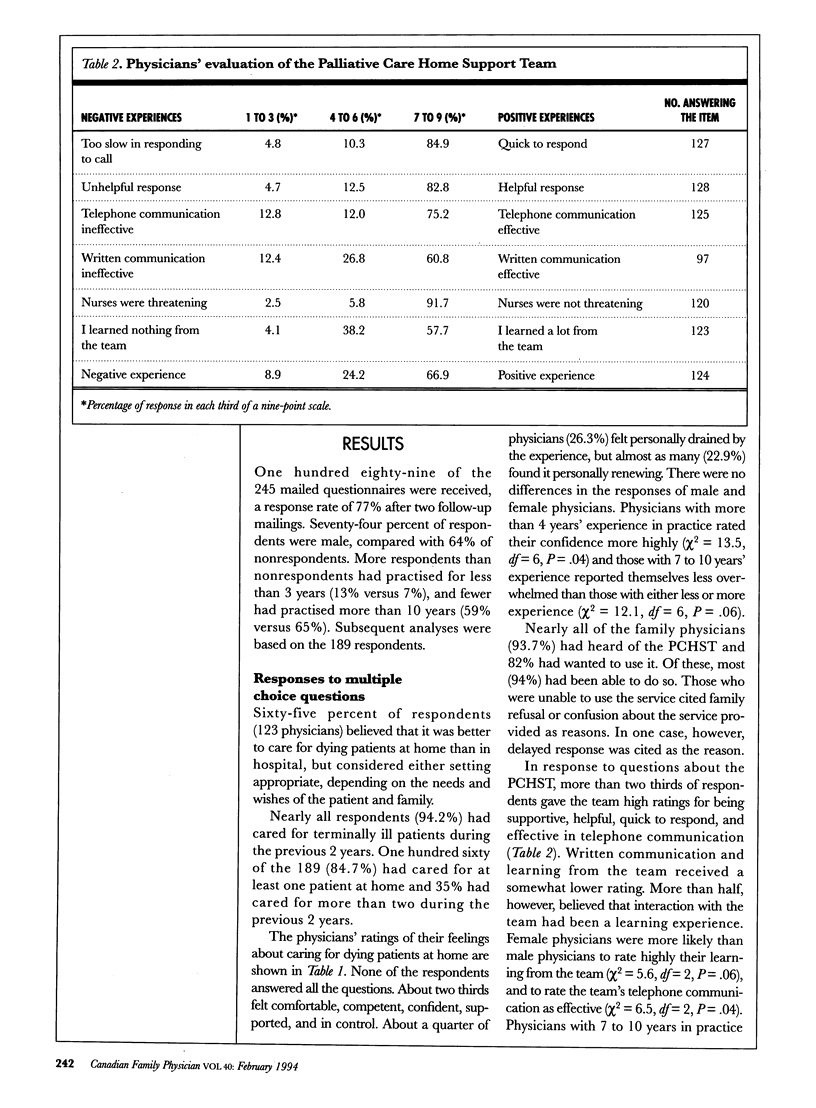
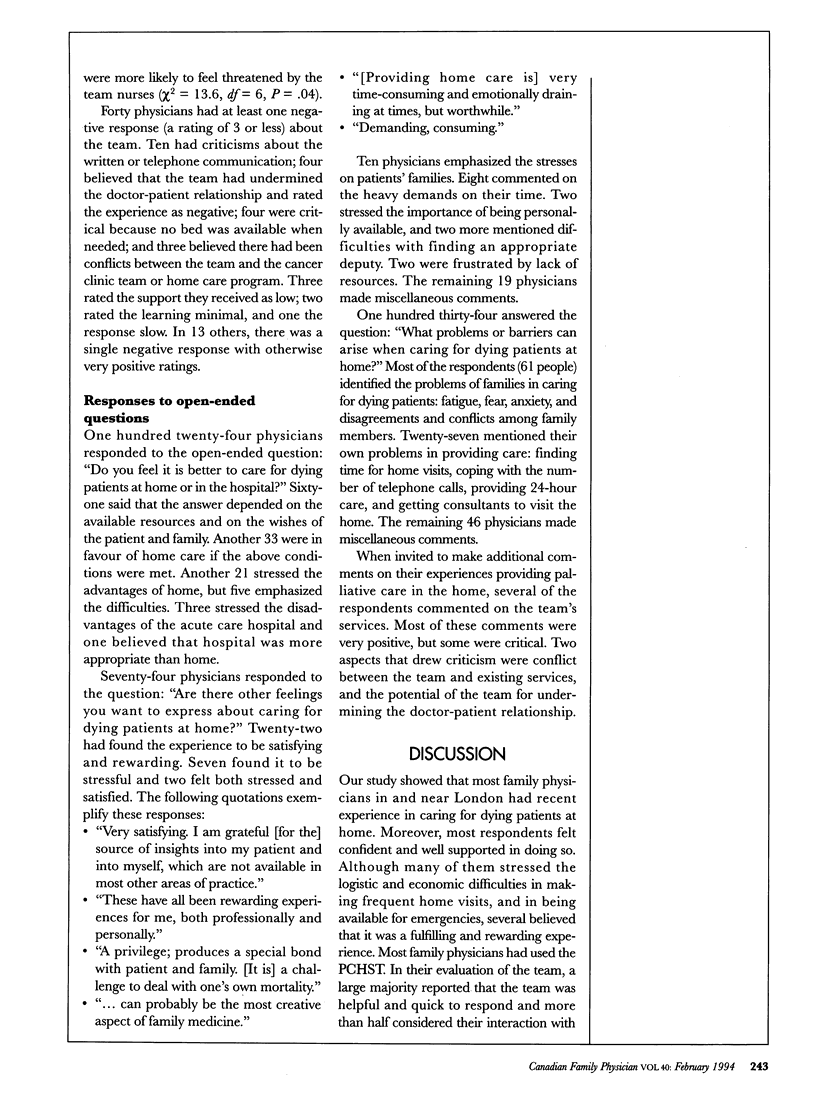
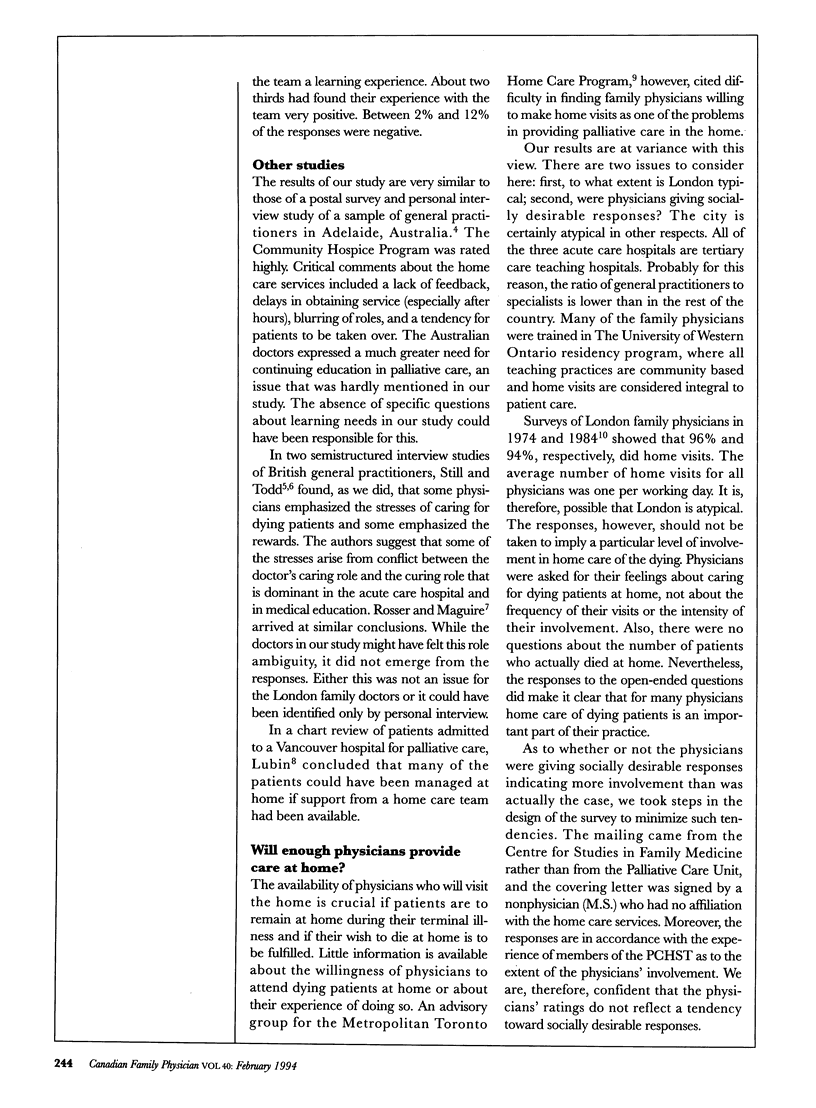
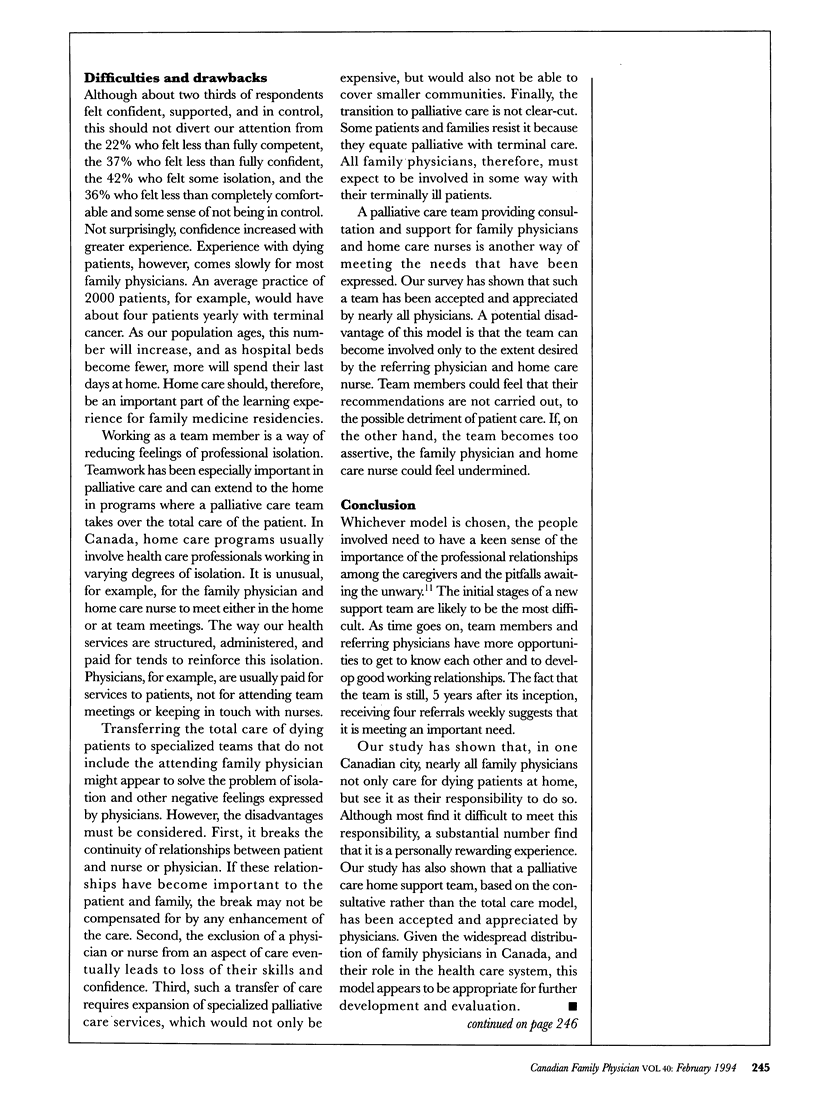
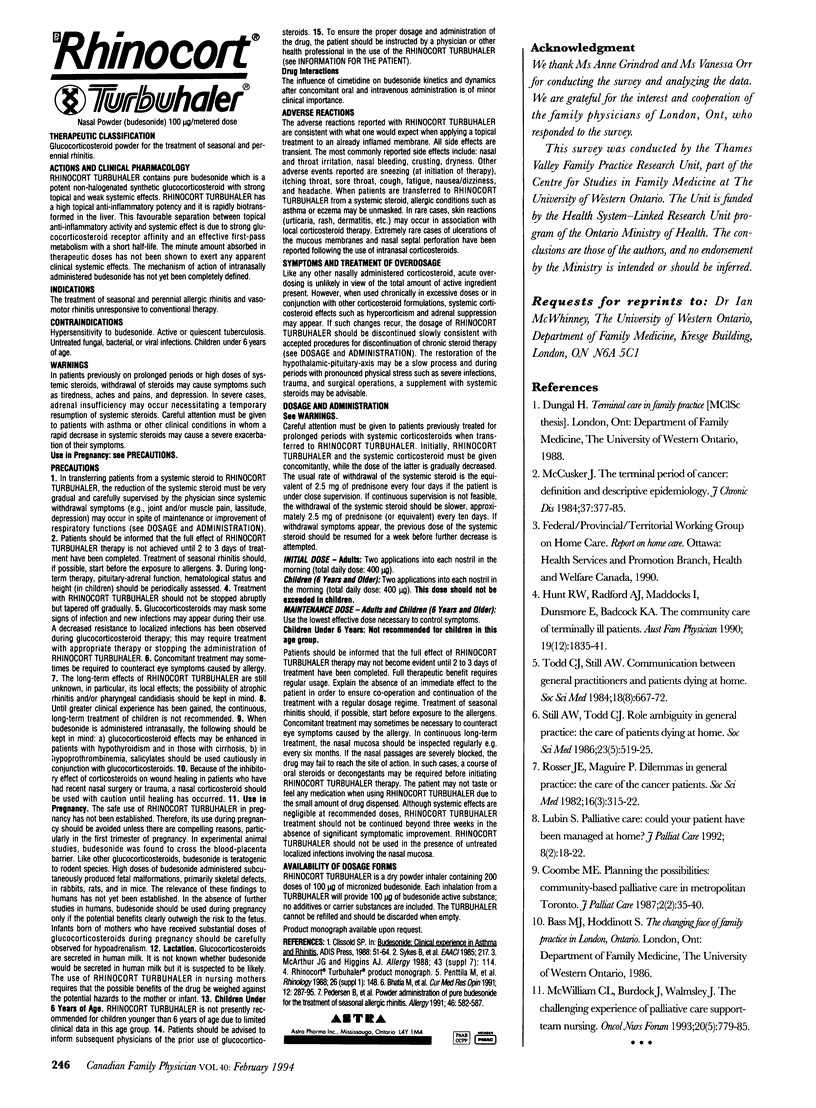
Selected References
These references are in PubMed. This may not be the complete list of references from this article.
- Hunt R. W., Radford A. J., Maddocks I., Dunsmore E., Badcock K. A. The community care of terminally ill patients. Aust Fam Physician. 1990 Dec;19(12):1835–1841. [PubMed] [Google Scholar]
- Lubin S. Palliative care--could your patient have been managed at home? J Palliat Care. 1992 Summer;8(2):18–22. [PubMed] [Google Scholar]
- McWilliam C. L., Burdock J., Wamsley J. The challenging experience of palliative care support-team nursing. Oncol Nurs Forum. 1993 Jun;20(5):779–785. [PubMed] [Google Scholar]
- Rosser J. E., Maguire P. Dilemmas in general practice: the care of the cancer patients. Soc Sci Med. 1982;16(3):315–322. doi: 10.1016/0277-9536(82)90341-0. [DOI] [PubMed] [Google Scholar]
- Still A. W., Todd C. J. Role ambiguity in general practice: the care of patients dying at home. Soc Sci Med. 1986;23(5):519–525. doi: 10.1016/0277-9536(86)90012-2. [DOI] [PubMed] [Google Scholar]
- Todd C. J., Still A. W. Communication between general practitioners and patients dying at home. Soc Sci Med. 1984;18(8):667–672. doi: 10.1016/0277-9536(84)90295-8. [DOI] [PubMed] [Google Scholar]


